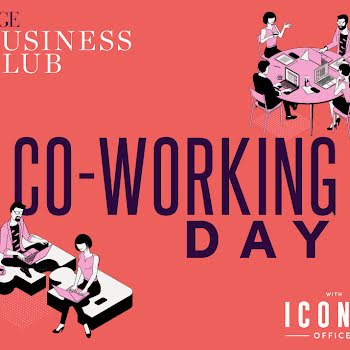By Andrea Galligan
04th Nov 2019
04th Nov 2019
In the first of a series of articles looking at maternity leave, second-time mother Andrea Galligan shares her experience of taking 12 months away from her professional role and how the demanding time that is maternity leave became a time of personal transformation. Along with it being a time of overwhelm and exhaustion of course.
I thought I’d endure it, not enjoy it. First-time around, as a hesitant expecting mother, I was convinced I was in for a shock with the arrival of a newborn and the subsequent maternity leave. And I wasn’t disappointed. The external expectations thrust on a first-time mother while on maternity leave can be daunting.
Not only is immediate upskilling required to take care of a newborn, but the adjustment to a new set of priorities seems unequalled.
Add that to the gruelling feeding schedule and the abrupt lack of access to colleagues and pre-baby social life and it can quickly feel overwhelming.
Perhaps that’s why I returned to work after nine months after my first baby. Surely the quicker I could get back to the office, the quicker the discomfort with my new parental status would ease? But what I didn’t consider is that the time after having a baby can also be a time for self-development.
With a long extended break from the grind of the office ahead, it’s a time calling out for reappraisal, taking things slowly and doing internal work.
It’s only since the arrival of my second child that I’ve considered what the gaps were for me the first time around. Hopefully by shedding some light on my learnings, I might open the space for honest conversation around this challenging time and even show it to be an untapped resource…when energy levels allow of course!
Confronting accepted norms
The consensus on maternity leave is that as a mother, you should focus primarily on your baby. The mainstream literature reinforces this by concentrating mostly on the practical ‘what to expect’ scenarios.
“I forced myself to socialise outside of the home far too much for my own comfort level.”
There are endless blogs, forums and content on how to prepare for every eventuality your baby may encounter. I’m not suggesting this information isn’t helpful, but it’s all skewed towards one topic: the baby’s needs. Down-time for mum is typically relegated to taking time to ‘relax’, posing as self-care.
The other accepted norm is that ‘getting out of the house’ is obligatory for new mothers. Taking this advice quite literally the first time around, I forced myself to socialise outside of the home far too much for my own comfort level.
Neglecting to question the narrative around adjustment to motherhood, I became socially overstimulated and psychologically undernourished to the point of depletion. Perhaps it was maturity, perhaps it was exhaustion, but this time around, I slowed down to the point of hibernation and set no expectations on myself to return to ‘normal’ or socialise until I was completely recovered from childbirth.
Slower pace, richer thoughts
By slowly down to such a degree, I soon found myself practicing habits I’d only dabbled in before: learning to meditate, identifying life priorities, using food as medicine. By slowing down and being more conscious in the present moment, with whatever came my way, I become more effective at coping with the complexity of modern living.
“It began with allowing my body to physically heal. This set the path out for other transformative experiences.”
By adopting practices I’d usually set aside for downtime on yoga retreats, I learned new skills as a person and a mother. This process was gradual and began with allowing my body to physically heal. This set the path out for other transformative experiences.
Hacks for healing after childbirth
1. Energy regeneration: Deep sleep is disrupted by the arrival of a new baby.
I was prepared for this and went to bed every evening with a soothing podcast to listen to. Having read Arianna Huffington’s Thrive, I adapted many of her suggestions into my sleep routine, with immediate success.
2. Natural superpowers Placenta consumption is an ancient method of healing and a source of nutrition.
Intrigued to try it out, I found it effective for both my energy levels and recovery. My encapsulation practitioner came to my home to support me and even made me a raw placenta smoothie. Now if that’s not a shot of empowerment, what is?
3. Birth storytelling therapy Births all have their own story. Both my births were natural, active births and both had their moments of elation and trauma.
This time around I invested in a birth storytelling session with a trained doula.
The session was therapeutic, allowing me to heal on many levels.
Next week Andrea covers the topics of conscious parenting.
Andrea Galligan is a content creator and communications professional. She lives with her husband and two children in Dublin 3. She promotes the benefits of healthy outdoor play on her Instagram account @numu_dublin























